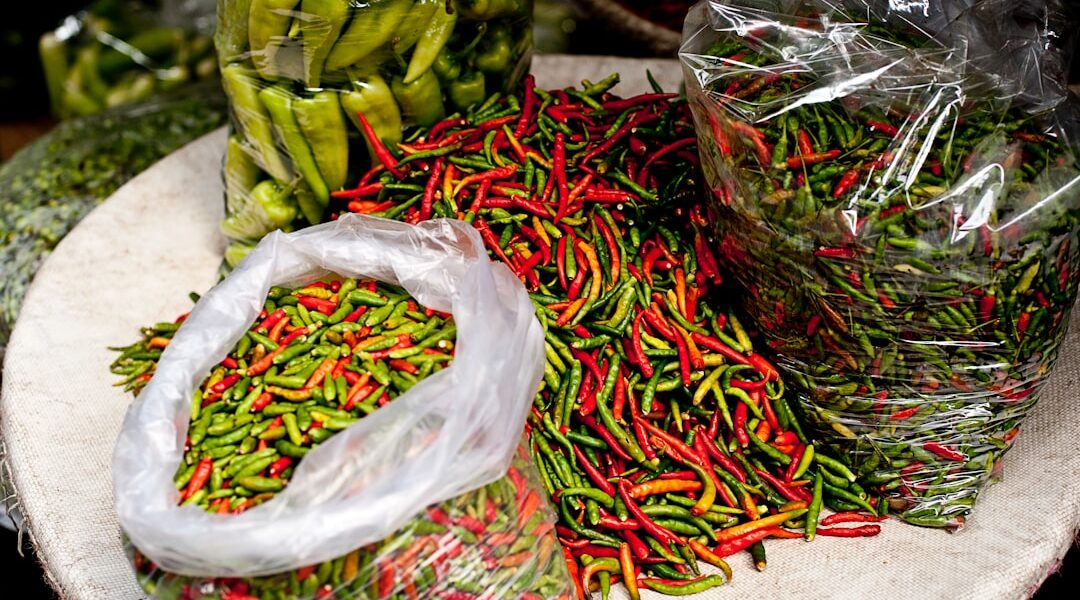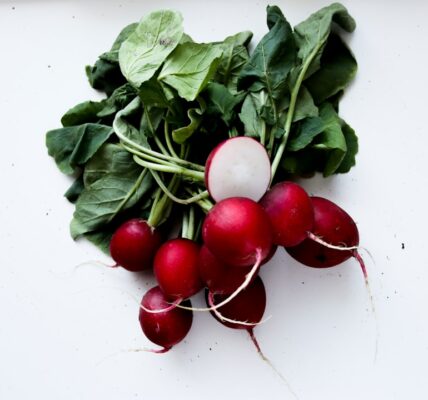Hot pot, also known as Chinese fondue, is a widely practiced cooking method in East Asian countries, particularly China, Japan, and Korea. This culinary tradition involves cooking various ingredients in a simmering pot of broth placed at the center of the dining table. Common ingredients include thinly sliced meat, seafood, tofu, and vegetables.
The communal nature of hot pot makes it a social and interactive dining experience. Participants gather around the pot, cooking and consuming food together. The broth used in hot pot is typically flavored with ingredients such as ginger, garlic, and scallions.
The flavor profile can range from mild to spicy, accommodating different taste preferences. Hot pot is not only a flavorful and satisfying meal but also offers a variety of dipping sauces. These sauces complement the cooked ingredients, adding an additional layer of taste to the dining experience.
The combination of communal cooking, diverse ingredients, and customizable flavors contributes to the popularity of hot pot across East Asia.
Key Takeaways
- Hot pot is a popular Chinese cooking method where a simmering pot of broth is placed in the center of the dining table, and ingredients are placed into the pot to cook.
- Traditional hot pot dipping sauces include soy sauce, sesame oil, and vinegar, and are often mixed with garlic, green onions, and cilantro for added flavor.
- Creative and unique hot pot dipping sauces can include ingredients like peanut butter, miso, and chili oil to add a new twist to the traditional flavors.
- Vegan and vegetarian hot pot dipping sauces can be made with ingredients like tahini, coconut milk, and soy-based alternatives to create delicious plant-based options.
- Spicy hot pot dipping sauces can be made with ingredients like Sichuan peppercorns, chili peppers, and fermented bean paste to add heat and depth of flavor to the hot pot experience.
- Sweet and savory hot pot dipping sauces can include ingredients like hoisin sauce, honey, and fruit preserves to balance out the savory flavors of the hot pot ingredients.
- Tips for pairing hot pot dipping sauces with ingredients include matching lighter sauces with delicate ingredients like seafood, and using richer sauces with heartier meats and vegetables.
Traditional Hot Pot Dipping Sauces
Classic Combinations
In traditional hot pot dining, there are several classic dipping sauces that are commonly enjoyed with the cooked ingredients. One of the most popular dipping sauces is a simple mixture of soy sauce, sesame oil, and chopped scallions. This sauce adds a savory and umami flavor to the ingredients, enhancing their natural taste.
Spicy and Aromatic Options
Another traditional dipping sauce is a combination of minced garlic, chopped cilantro, and chili oil. This sauce provides a spicy kick and aromatic flavor that complements the richness of the hot pot ingredients. Additionally, a mixture of vinegar, soy sauce, and a dash of sugar creates a tangy and slightly sweet dipping sauce that cuts through the richness of the hot pot broth and ingredients.
Creative Twists
In addition to these classic dipping sauces, some hot pot enthusiasts enjoy creating their own unique and creative dipping sauces to elevate their dining experience. These inventive sauces often incorporate non-traditional ingredients such as fruit purees, nut butters, and herbs to add unexpected flavors to the hot pot ingredients. For example, a combination of peanut butter, hoisin sauce, and a splash of lime juice creates a creamy and tangy dipping sauce that pairs well with the savory elements of hot pot. Another creative option is a blend of mango puree, chili flakes, and honey, which adds a sweet and spicy twist to the hot pot experience.
Vegan and Vegetarian Hot Pot Dipping Sauces

For those who follow a vegan or vegetarian diet, there are plenty of delicious dipping sauce options that complement the plant-based ingredients commonly enjoyed in hot pot. A simple combination of soy sauce, rice vinegar, and grated ginger creates a light and refreshing dipping sauce that pairs well with tofu, mushrooms, and leafy greens. Additionally, a mixture of tahini, miso paste, and sesame oil offers a creamy and savory dipping sauce that adds depth of flavor to the hot pot ingredients.
Furthermore, a blend of coconut milk, red curry paste, and lime juice creates a fragrant and slightly spicy dipping sauce that enhances the overall dining experience. These vegan and vegetarian dipping sauces provide an array of flavors that cater to those with dietary restrictions while still allowing them to fully enjoy the hot pot experience.
Spicy Hot Pot Dipping Sauces
| Sauce Type | Spiciness Level | Popular Ingredients |
|---|---|---|
| Sichuan Spicy Sauce | Very Spicy | Sichuan peppercorns, chili oil, garlic |
| Korean Gochujang Sauce | Medium Spicy | Gochujang paste, soy sauce, sesame oil |
| Thai Sriracha Sauce | Medium Spicy | Chili peppers, garlic, vinegar |
For those who enjoy a bit of heat in their meals, there are several spicy dipping sauces that add an extra kick to the hot pot experience. A classic Sichuan-style dipping sauce combines chili oil, Sichuan peppercorns, and black vinegar to create a numbing and spicy flavor that pairs well with rich and fatty hot pot ingredients. Another popular spicy option is a mixture of gochujang (Korean chili paste), soy sauce, and sesame seeds, which adds a bold and complex flavor to the hot pot ingredients.
Additionally, a blend of sriracha, lime juice, and honey creates a sweet and spicy dipping sauce that balances the heat with a touch of sweetness. These spicy dipping sauces cater to those who enjoy bold and intense flavors in their hot pot experience.
Sweet and Savory Hot Pot Dipping Sauces
In addition to spicy options, there are also plenty of sweet and savory dipping sauces that add depth of flavor to the hot pot ingredients. A combination of hoisin sauce, honey, and garlic creates a sweet and savory dipping sauce that pairs well with grilled meats and seafood in hot pot. Another delicious option is a mixture of soy sauce, mirin (Japanese sweet rice wine), and grated ginger, which offers a delicate balance of sweetness and umami flavor.
Additionally, a blend of oyster sauce, brown sugar, and sesame oil creates a rich and savory dipping sauce that enhances the natural flavors of the hot pot ingredients. These sweet and savory dipping sauces provide a contrast of flavors that elevate the overall dining experience.
Tips for Pairing Hot Pot Dipping Sauces with Ingredients

Balancing Flavors with Rich and Delicate Ingredients
When enjoying hot pot, it’s essential to consider how different dipping sauces pair with various ingredients to create a harmonious dining experience. Rich and fatty meats like beef or lamb pair well with tangy or acidic dipping sauces, such as vinegar-based or citrus-based options, to cut through the richness. On the other hand, delicate seafood like shrimp or fish benefits from light and refreshing dipping sauces, like soy-based or herb-infused options, to complement their natural flavors.
Enhancing Flavors with Tofu and Vegetables
Additionally, tofu and vegetables can be enhanced with creamy or nutty dipping sauces, like tahini-based or peanut-based options, to add depth of flavor. It’s also crucial to consider the level of spiciness in the dipping sauces and how it complements or contrasts with the heat level of the hot pot broth.
Customizing Dipping Sauces for a Personalized Experience
By carefully selecting and pairing dipping sauces with ingredients, diners can create a personalized hot pot experience that satisfies their taste preferences. In conclusion, hot pot dipping sauces play an essential role in enhancing the overall dining experience by adding layers of flavor to the cooked ingredients. From traditional options to creative blends, there are endless possibilities for customizing dipping sauces to cater to different dietary preferences and taste preferences.
Experimenting with Combinations for a Delicious Experience
Whether it’s spicy, sweet, savory, or tangy, there is a wide range of dipping sauces available to elevate the hot pot experience for everyone at the dining table. By experimenting with different combinations and considering how they pair with specific ingredients, diners can create a personalized hot pot experience that satisfies their cravings for delicious flavors and communal dining.
If you’re looking for some inspiration for hot pot sauce recipes, you should check out this article on Freeway Check. They have a great collection of different hot pot sauce recipes that are sure to add some flavor to your next hot pot meal. Whether you’re a fan of spicy, savory, or sweet sauces, you’ll find something to suit your taste. Check out their article here for some delicious hot pot sauce ideas.
FAQs
What is hot pot sauce?
Hot pot sauce is a flavorful and spicy condiment that is commonly used in hot pot meals. It is typically made with a combination of ingredients such as chili peppers, garlic, soy sauce, vinegar, and various spices.
What are some popular hot pot sauce recipes?
Some popular hot pot sauce recipes include Sichuan spicy hot pot sauce, sesame hot pot sauce, and garlic chili hot pot sauce. These recipes often vary in ingredients and spice levels to cater to different preferences.
How do you make Sichuan spicy hot pot sauce?
To make Sichuan spicy hot pot sauce, you will need ingredients such as Sichuan peppercorns, chili peppers, garlic, ginger, soy sauce, and sesame oil. These ingredients are typically ground or blended together to create a flavorful and spicy sauce.
What are some common variations of hot pot sauce?
Some common variations of hot pot sauce include adding ingredients such as peanut butter, sesame paste, or fermented tofu to create different flavors and textures. These variations can cater to different taste preferences and regional differences.
Can hot pot sauce be adjusted to different spice levels?
Yes, hot pot sauce can be adjusted to different spice levels by varying the amount of chili peppers or using milder varieties of chili peppers. This allows individuals to customize the spice level to their liking.




